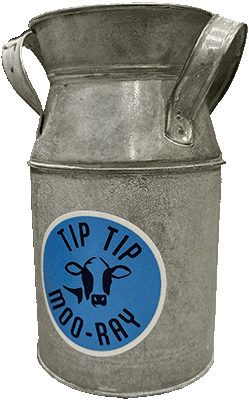224,000 people were estimated to have contracted salmonella from ice cream in September, 1994. These estimated people ingested one or more of 8 ice cream products, made with pasteurized milk, from Schwann’s in Minnesota.
Minnesota ice cream outbreak
Pasteurized milk used to make the contaminated ice cream was transported by truck. The delivery tank contained residue from contaminated raw eggs. This truck was moving raw eggs between Iowa and Nebraska before it was recruited to make this pasteurized milk delivery and had not been adequately cleaned beforehand, leaking rotten eggs into the production line.
Pasteurization did not prevent or cause this salmonella outbreak. Operating a fleet of trucks allows for hyper-efficiency and increased profit, allowing trucks to be swapped around to pivot production and minimize downtime. Problem is, expansive operational architecture also represents the inclusion of many points of failure that are a necessary component of industrialized food systems.
When trucks are traded around for different applications within a large food system, adding complexity and randomness to the production of ice cream in this case, opportunities for contamination are created where they wouldn’t exist otherwise.
Most foodborne illness comes from complex food systems
In recent legislative hearings, numbers were brought by opponents to the legalization to raw milk. Commissioner Mike Strain of Louisiana stated (pubmed) that 3.2% of the US population consumes raw milk – greater than 10 million people. He went on to state that 761 get sick per year, with 22 cases requiring hospitalization (for any period of time), and no deaths.
That’s a 1 in 14,250 (or 0.007%) chance of getting something as mild as a stomach ache, and a 1 in 500,000 (or 0.0002%) risk of greater severity. Compare this number with the 0.69% of leafy green eaters who fall ill from leafy greens each year.
48 million people in America, or 1 in 6, get sick from foodborne illness every year. Food consumed after moving through several touch points in a highly complex food system is what causes virtually all foodborne illness.
Raw milk achieves a greater level of safety performance because all states which allow unpasteurized milk for human consumption to be sold in retailers require that milk to be milked, cooled, and bottled onsite. Designing a biosecurity program is much more feasible in a contained system.
Raw milk avoids industrial mishaps
Raw milk is not trucked anywhere before the product is sealed. Raw milk is cooled and bottled on the farm, then sold direct-to-consumer. When a small and distributed food system makes a mistake, the effects are isolated. Contamination can be traced and minimized, through biosecurity procedures, as the equipment used to produce raw milk is generally static and kept within a closed system.
When big food systems make a mistake, more points of failure are added to the production process, and the consequences can affect a massive amount of people. Raw milk and pasteurized milk aren’t just two different beverages, they represent two completely different food systems.




